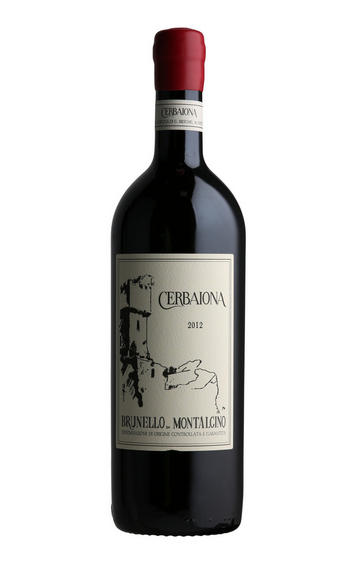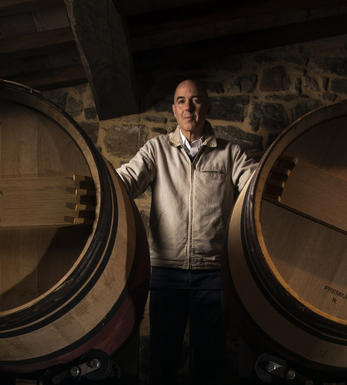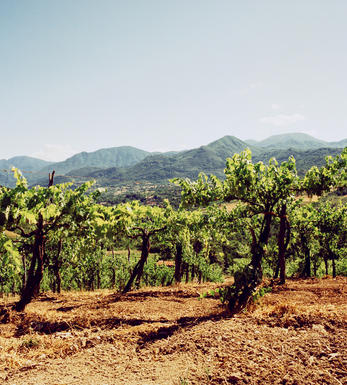
2012 Brunello di Montalcino, Cerbaiona, 10 year Library Release, Tuscany, Italy

Critics reviews
Only a slight fading at the rim reveals the 10 years of maturity that the 2012 Brunello di Montalcino has undergone, yet from its bouquet—a brilliant mix of dusty rose, dried strawberries, plum skins, lavender and a hint of tobacco—you’d never know. “Ethereal” is the word, as silken textures wash across the palate weightlessly, yet unleash an array of wild berry fruits, cloves, allspice and dried citrus that totally captivates.
Still lightly tannic yet amazingly energetic, the 2012 tapers off potent and long, leaving nuances of liquorice and a hint of balsamic spice that lingers on and on. There is no fear of decline here; in fact, it’s still on the steady path of evolution, and collectors who have the 2012 Cerbaiona should consider themselves very lucky. It’s a total charmer.
Drink 2022 - 2028
Eric Guido, Vinous.com (January 2023)
Cerbaiona's 2012 Brunello di Montalcino is a nuanced and delicate wine that offers ample power, intensity and length. What the wine does best is paint a portrait of the grape in its most pure and naked state. It offers crisp outlines with loads of wild berry, blue flower and moist earth on the inside. That balanced ensemble of flavours adds to the long and polished persistence you feel in the mouth. Give this wine another 10 years of ageing to best appreciate its slow evolution and budding complexity.
I tasted this wine last year at the estate just before its commercial release. Estate Manager Matthew Fioretti asked me to refrain from publishing a review, and I respected his wish. However, I bought a bottle of the wine during my stay in Montalcino. I was curious to chart its evolution roughly one year later, and the results are phenomenal. I was unable to taste the 2013 vintage because it had not yet been released as we went to press.
Drink 2020 - 2040
Monica Larner, Wine Advocate (February 2018)
Cask sample 1: Deep ruby with a narrow orange rim. Cool fruit and herbs on the nose. Remarkable sweet and ripe fruit on the attack with firm, bitter tannins. A successful balancing act, showing great concentration while keeping perfect focus and poise.
Cask sample 2: Lustrous ruby with a narrow orange rim. More ethereal but at the same time bags of concentration and raspberry on the nose. Perhaps just a tiny hint of undergrowth. Firm powdery tannins, which are less bitter. Really complementary to sample 1.
Drink 2020 - 2036
Walter Speller, JancisRobinson.com (May 2016)
About this WINE

Cerbaiona, Tuscany
Tucked away off the Torronieri road the small Cerbaiona estate has been home to Diego & Nora Molinari since 1977, who produced their first vintage in 1980, all 70 bottles of it!
The estate comprises 3 hectares of vines & 12 ha of wood and olive grove; half planted to Brunello, the rest to Sant'Antimo and IGT Toscana (using Cabernet Sauvignon, Malvasia Nera, Merlot & Syrah). Production is limited to 8,000 bottles.
Lying on the north-eastern shoulder of the Montalcino commune the estate enjoys a fine eastern exposition at 390 metres elevation, with good aeration & galestro/alberese clay soils. This imbues the wines with a naturally good acidity. Diego does not use herbicides, pesticides or fungicides on his vines. This hands-off approach is reflected in their tiny winery, which is bolted onto the back of the 16th century property. A wooden press is preferred, followed by gentle vinification in cement & ageing/invecchiamento in 20hl slavonian botte.
The Brunello spends 30 mths in oak, followed by a year in bottle pre-release, while the Rosso sees 18 mths.

Brunello di Montalcino
Along with Chianti, Brunello di Montalcino is Tuscany's most famous DOCG and the region's boldest expression of Sangiovese. Located 30 miles south of Siena with the hilltop town of Montalcino as its epicentre, its 2,000 hectares of vines are naturally delimited by the Orcia, Asso and Ombrone valleys. Brunello is the local name for the Sangiovese Grosso clone from which Brunello di Montalcino should be made in purezza (ie 100 percent).
The Brunello di Montalcino DOCG has a whale-like shape: at its head, at 661 metres above sea level on ancient, stony galestro soils facing east and southeast lies the town of Montalcino, where the DOC was founded. As you follow the spine south towards the tail, the vineyards lose altitude – those around Colle Sant'Angelo are at 250 metres – while the soils become richer with iron and clay. Further east, in the shadow of the 1,734 metre Mont'Amiata lies the village of Castelnuovo dell'Abate where the vineyards are strewn with a rich mix of galestro, granitic, volcanic, clay and schist soil types.
Historically, the zone is one of Tuscany's youngest. First praised in 1550 by Leandro Alberti for the quality of its wines, it was Tenuta Il Greppo who bottled the inaugural Brunello di Montalcino in 1888. By 1929, the region had 925 hectares of vines and 1,243 hectares of mixed crops, while in 1932 it was decreed that only those wines made and bottled within the commune could be labelled as Brunello di Montalcino. Since then, the number of producers has risen from 11 in 1960 to 230 in 2006, while over the same period the vineyards have expanded from 1,000 hectares to 12,000. The region earned its DOC in 1966, and was upgraded to DOCG in 1980.
Brunello di Montalcino cannot be released for sale until five years after the harvest, or six years in the case of Brunello di Montalcino Riserva. During this time the wines should be aged for at least two years in oak, followed by at least four months in bottle (six months for Riservas); maximum yields are 55 hl/ha.
Rosso di Montalcino is declassified Brunello di Montalcino, released for sale 18 months after the harvest.
Recommended producers: Costanti, Fuligni, Lisini, San Giuseppe, Soldera, Cerbaiona

Sangiovese
A black grape widely grown in Central Italy and the main component of Chianti and Vino Nobile di Montepulciano as well as being the sole permitted grape for the famed Brunello di Montalcino.
It is a high yielding, late ripening grape that performs best on well-drained calcareous soils on south-facing hillsides. For years it was blighted by poor clonal selection and massive overcropping - however since the 1980s the quality of Sangiovese-based wines has rocketed upwards and they are now some of the most sought after in the world.
It produces wines with pronounced tannins and acidity, though not always with great depth of colour, and its character can vary from farmyard/leather nuances through to essence of red cherries and plums. In the 1960s the advent of Super Tuscans saw bottlings of 100% Sangiovese wines, as well as the introduction of Sangiovese/Cabernet Sauvignon blends, the most famous being Tignanello.


Buying options
Add to wishlist
Description
Only a slight fading at the rim reveals the 10 years of maturity that the 2012 Brunello di Montalcino has undergone, yet from its bouquet—a brilliant mix of dusty rose, dried strawberries, plum skins, lavender and a hint of tobacco—you’d never know. “Ethereal” is the word, as silken textures wash across the palate weightlessly, yet unleash an array of wild berry fruits, cloves, allspice and dried citrus that totally captivates.
Still lightly tannic yet amazingly energetic, the 2012 tapers off potent and long, leaving nuances of liquorice and a hint of balsamic spice that lingers on and on. There is no fear of decline here; in fact, it’s still on the steady path of evolution, and collectors who have the 2012 Cerbaiona should consider themselves very lucky. It’s a total charmer.
Drink 2022 - 2028
Eric Guido, Vinous.com (January 2023)
wine at a glance
Delivery and quality guarantee